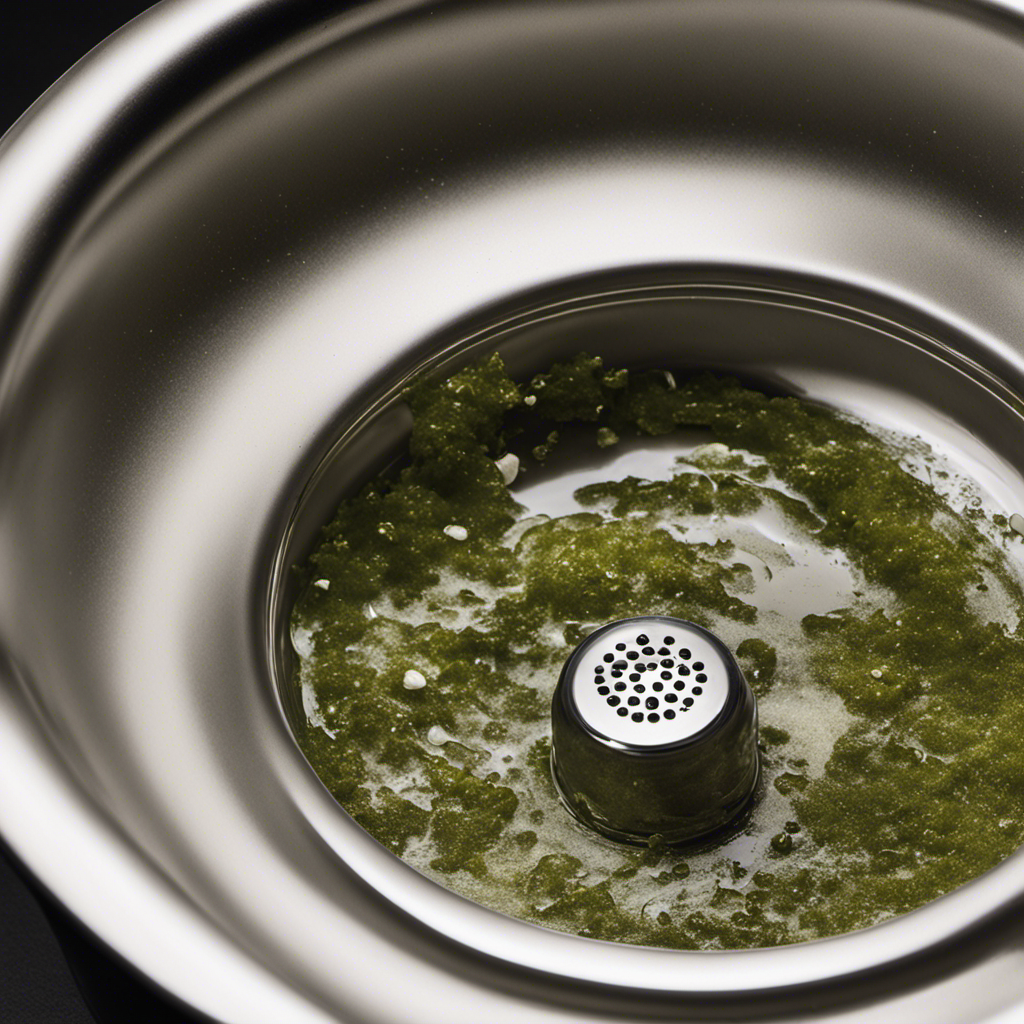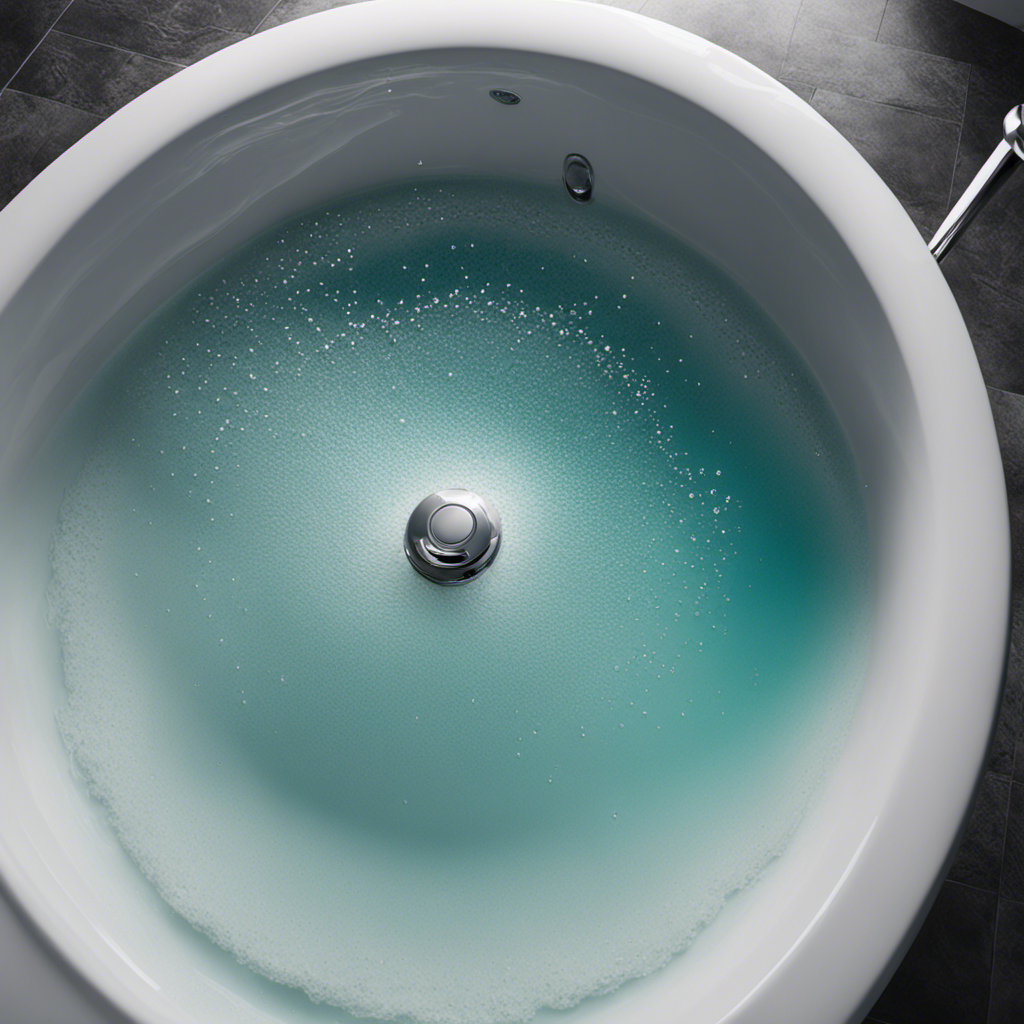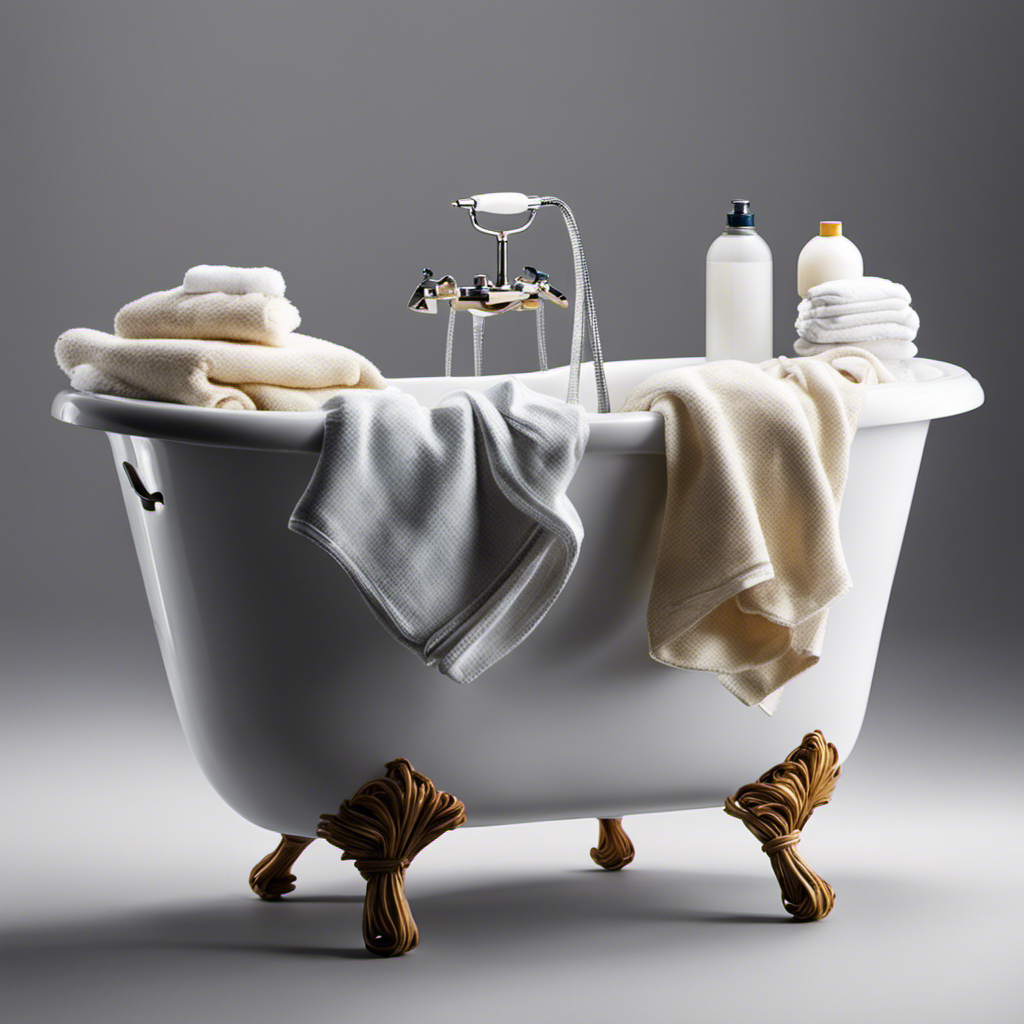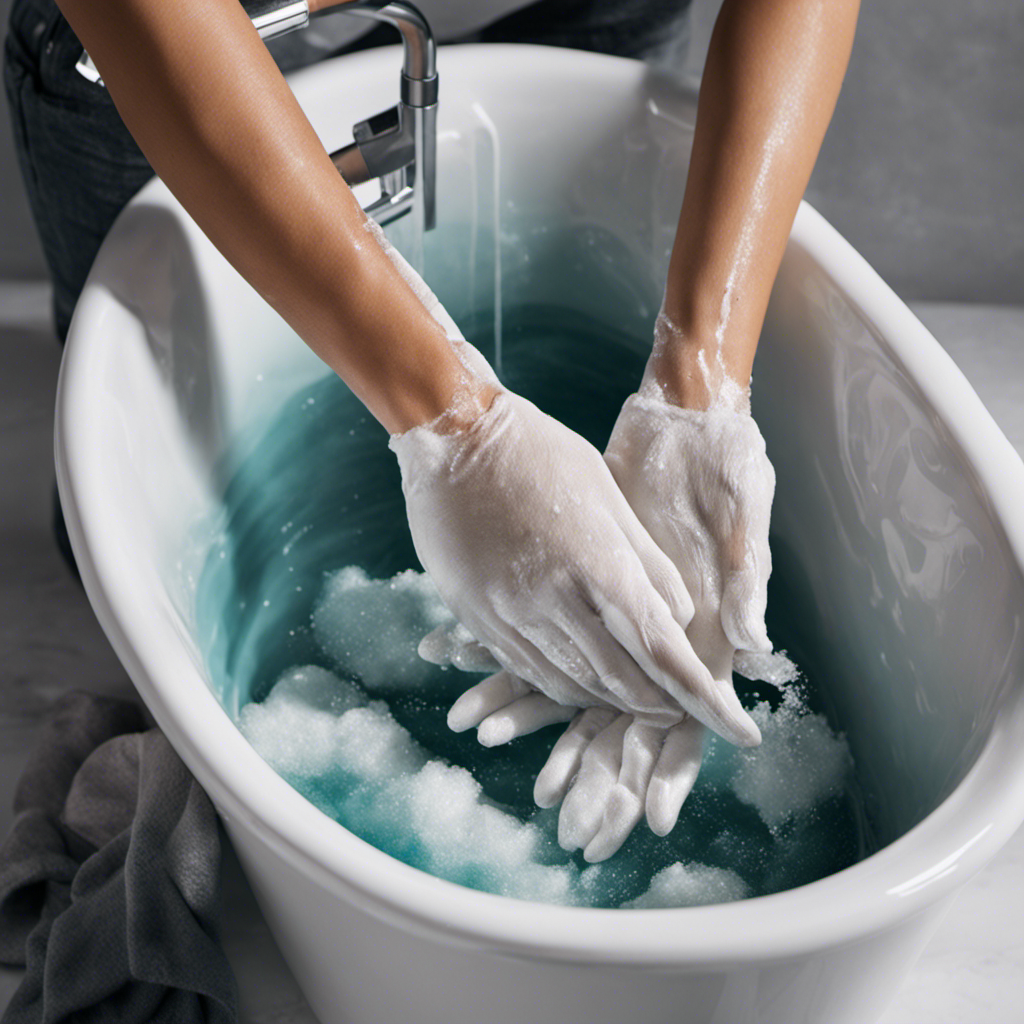I’ve been there – standing ankle-deep in water, desperately trying to unclog my bathtub drain. It’s frustrating, time-consuming, and downright inconvenient.
But fear not, because I’ve got you covered. In this article, I’m going to share with you my step-by-step guide on how to unclog your bathtub drain. Armed with the right tools and a little know-how, you’ll be able to tackle this plumbing challenge head-on.
So, let’s dive in and banish those clogs for good!
Key Takeaways
- Slow draining water and standing water in the tub are common signs of a clogged bathtub drain.
- Hair buildup, soap scum, and foreign objects like toys or jewelry are the main causes of bathtub drain clogs.
- DIY methods to unclog a bathtub drain include using a plunger, drain snake, baking soda and vinegar, or a wet/dry vacuum.
- If DIY methods are not effective, it is advisable to seek professional help from a plumber.
Understanding the Causes of Bathtub Drain Clogs
To understand why your bathtub drain is clogged, you’ll need to know the common causes.
There are several signs that indicate a clogged drain, such as slow draining water, standing water in the tub, and unpleasant odors coming from the drain.
The most common causes of bathtub drain clogs include hair buildup, soap scum, and foreign objects like toys or jewelry accidentally falling down the drain. These substances can accumulate over time and create a blockage, preventing water from flowing freely.
While there are several DIY methods to unclog a bathtub drain, it’s important to know when to seek professional help. If the clog persists despite your efforts or if you’re unsure about how to proceed, it’s best to call a professional plumber who can effectively resolve the issue and prevent any further damage to your plumbing system.
Tools and Materials Needed for Unclogging a Bathtub Drain
You’ll need a plunger, a drain snake, and some baking soda and vinegar to tackle the clog in your bathtub drain. However, if you don’t have a plunger or prefer an alternative method, there are a few options you can consider. One effective plunger alternative is using a wet/dry vacuum to create suction and remove the clog. Another option is using a wire hanger, straightened out and bent into a hook shape, to manually remove the blockage. If these methods don’t work or if you’re not comfortable attempting them yourself, it may be time to seek professional help. A licensed plumber will have the necessary tools and expertise to unclog your bathtub drain safely and efficiently.
| Pros | Cons |
|---|---|
| Affordable | May not work |
| Easy to use | Requires some skill |
| Can be done quickly | May cause further damage |
Step-By-Step Guide to Removing Debris From Your Bathtub Drain
Using a drain snake is a simple and effective way to remove debris from a clogged bathtub drain.
To maintain a clean bathtub drain, it’s essential to follow a few tips.
First, regularly clean the drain stopper to prevent hair and soap scum buildup.
Additionally, using a drain cover can help catch larger debris before it goes down the drain.
When unclogging a bathtub drain, there are some common mistakes to avoid.
One is using chemical drain cleaners, as they can damage pipes and are harmful to the environment.
Another mistake is using excessive force when using a plunger or drain snake, which can cause further damage.
Using Natural Remedies to Clear a Clogged Bathtub Drain
If you’re dealing with a clogged bathtub drain, consider using natural remedies for an effective and eco-friendly solution. DIY bathtub drain cleaners can be a great alternative to harsh chemicals that can harm the environment.
One popular method is using vinegar and baking soda for unclogging bathtub drains. Here’s how it works:
- Start by pouring half a cup of baking soda down the drain.
- Follow it up with one cup of vinegar.
- Let the mixture sit for about 30 minutes to allow it to break down the clog.
- Finally, flush the drain with hot water to clear any remaining debris.
Vinegar and baking soda are powerful natural cleansers that can dissolve hair, soap scum, and other blockages. This method is not only effective but also safe for your pipes and the environment. Give it a try before resorting to harsh chemicals.
Preventing Future Clogs in Your Bathtub Drain
To prevent future clogs in your bathtub drain, regularly clean the drain by pouring a mixture of vinegar and baking soda down it. This simple and effective combination helps to break down any buildup or debris that may be blocking the drain. Additionally, there are several other tips for maintaining your bathtub drain and preventing clogs:
| Tip | Description |
|---|---|
| Use a drain cover | Install a drain cover to catch hair and other debris before it enters the drain. |
| Avoid pouring grease or oil down the drain | Grease and oil can solidify and cause clogs. Dispose of them properly in a sealed container. |
| Flush with hot water | Once a week, pour a kettle of hot water down the drain to help dissolve any residue. |
| Use a plunger | If you notice slow draining, use a plunger to create suction and dislodge any blockages. |
| Regularly clean the overflow drain | Remove the overflow cover and clean out any debris that may have accumulated. |
Conclusion
In conclusion, unclogging a bathtub drain can be a simple task when you have the right tools and knowledge. By understanding the common causes of clogs and using the appropriate techniques, you can easily remove debris from your drain and restore it to its full functionality.
Using natural remedies can also be an effective and eco-friendly solution. Remember to regularly maintain your drain to prevent future clogs, just like how we maintain our cars to avoid breakdowns on the road.










